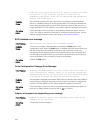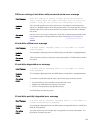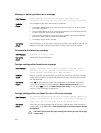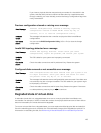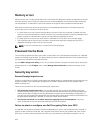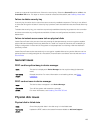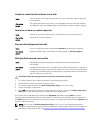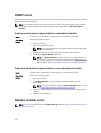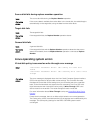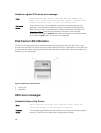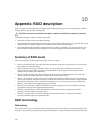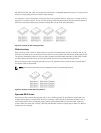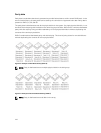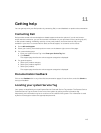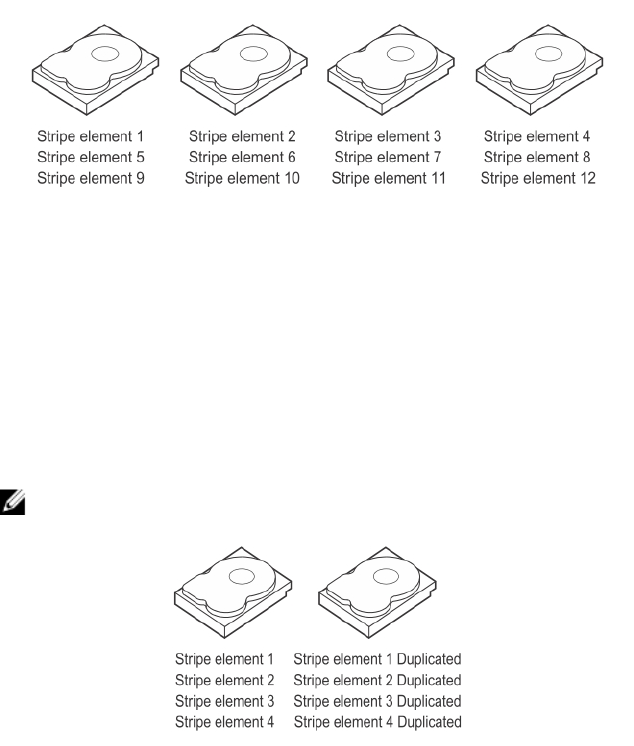
KB, 256 KB, 512 KB, and 1 MB. The stripes are interleaved in a repeated sequential manner. The part of the
stripe on a single physical disk is called a stripe element.
For example, in a four-disk system using only disk striping (used in RAID 0), segment 1 is written to disk 1,
segment 2 is written to disk 2, and so on. Disk striping enhances performance because multiple physical
disks are accessed simultaneously, but disk striping does not provide data redundancy.
Figure 21. Example of disk striping (RAID 0)
Disk mirroring
With mirroring (used in RAID 1), data written to one disk is simultaneously written to another disk. If one
disk fails, the contents of the other disk can be used to run the system and rebuild the failed physical disk.
The primary advantage of disk mirroring is that it provides complete data redundancy. Both disks contain
the same data at all times. Either of the physical disks can act as the operational physical disk.
Disk mirroring provides complete redundancy, but is an expensive option because each physical disk in
the system must be duplicated.
NOTE: Mirrored physical disks improve read performance by read load balance.
Figure 22. Example of Disk Mirroring (RAID 1)
Spanned RAID levels
Spanning is a term used to describe the way in which RAID levels 10, 50, and 60 are constructed from
multiple sets of basic, or simple RAID levels. For example, a RAID 10 has multiple sets of RAID 1 arrays
where each RAID 1 set is considered a span. Data is then striped (RAID 0) across the RAID 1 spans to
create a RAID 10 virtual disk. Similarly, RAID 50 and RAID 60 combine multiple sets of RAID 5 or RAID 6
respectively with striping.
113



